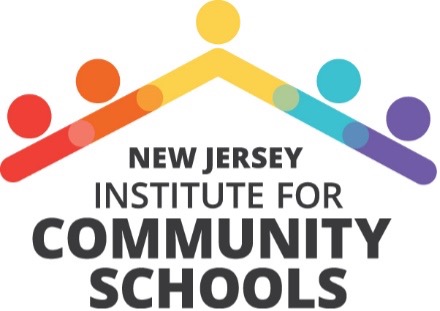 The Center for Human and Social Development launched the New Jersey Institute for
Community Schools in 2025. The Institute is a center for partner organizations working
throughout the state, and farther afield, to come together in a community of practice
to share research, insights and find common ground. The Institute brings together
stakeholders within the state who are supporting schools through an explicit community
schools approach or who may be interested in expanding current partnerships with school
districts. It will leverage the work already being done in many New Jersey public
schools and identify new areas of collaboration and action to benefit students, staff,
families and public schools and their surrounding communities.
The Center for Human and Social Development launched the New Jersey Institute for
Community Schools in 2025. The Institute is a center for partner organizations working
throughout the state, and farther afield, to come together in a community of practice
to share research, insights and find common ground. The Institute brings together
stakeholders within the state who are supporting schools through an explicit community
schools approach or who may be interested in expanding current partnerships with school
districts. It will leverage the work already being done in many New Jersey public
schools and identify new areas of collaboration and action to benefit students, staff,
families and public schools and their surrounding communities.
The Institute supports the implementation and expansion of the Community Schools framework in all New Jersey PK-12 public schools. It does so in the belief that public schools need to be the center of their communities. A community schools approach helps students and families overcome in-school and out-of-school barriers, including obstacles imposed by poverty. By embracing this goal, community school proponents work to make sure that all students receive the best public education possible.
Check out our inaugural newsletter!
What are Community Schools?
Community schools are not specific programs, but an evidence-based, effective approach that envisions public schools as playing a vital role in the betterment of their surrounding communities. [1] Each community school adopts different approaches, but all community schools are unified in the fact that the approach they design meets the unique needs of students, families, teachers and staff who study, live, and work in that specific community. Community schools do so by taking advantage of the services available through partners, prioritized and organized by on-site community school coordinators.
In the words of some of the preeminent community school advocates and practitioners:
Community schools are built on a foundation of mutually beneficial relationships between schools and communities. Partners from the public, private, and nonprofit sectors bring necessary expertise and assets to the schools in areas including health and mental health, youth development, academic supports, and college and career readiness. Schools and their partners use resources in new ways to ensure that students and families achieve and that communities thrive. [2]
On-site community school coordinators implement a range of services from each of the six key practices of community schools from the Learning Policy Institute. Coordinators oversee outreach to students and families and work alongside a site-based leadership team to focus on the broader needs of students. The approach embodies a whole child model, with a critical emphasis on making schools more welcoming and collaborative for everyone.
Academic Evidence of the Impact of Community School Approaches
The academic evidence for the impact of well-designed community schools is strong. It includes a national meta-analysis and an extensive analysis of the impact community schools are having in New York City. In 2022, community school advocates formed Community Schools Forward, a national collaboration to help guide a comprehensive and effective approach to the systemic changes envisioned by community school supporters. This resulted in codifying the six key practices of community schools, an expansion from the previous Four Pillars model. The effort is led by four national partners: the Center for Universal Education at the Brookings Institution; the Children Aid’s National Center for Community Schools; the Coalition for Community Schools at the Institute for Educational Leadership; and the Learning Policy Institute.
The Institute will become home to three entities:
- Community of Practice
- Technical Assistance Center
- Research Center
Mission Alignment and Benefits to Saint Elizabeth University
Saint Elizabeth University, as a Hispanic-Serving Institution and a Minority Serving Institution, envisions the Institute as helping it expand its outreach among at-risk students. Many of the New Jersey school districts most ready to implement a community school model have experienced recent and rapid changes in the demographic make-up of their students and families. The Institute would enable SEU to expand its outreach and mentoring by strengthening even further its ties to public schools in New Jersey, one of the most diverse states in the U.S. It also can help serve as a private university model for other institutions, both private and public, at a time when such an approach is even more warranted.
[1] Anna Maier, Julia Daniel, and Jeannie Oakes (2017). “Community Schools as an Effective School Improvement Strategy: A Review of the Evidence,” Learning Policy Institute and NEPC Research Brief, December 2017, p. 1.
[2] Martin Blank, Ira Harkavy, Jane Quinn, Lisa Villarreal, David Goodman (2023). The Community Schools Revolution: Building Partnerships, Transforming Lives, Advancing Democracy (Collaborative Communications Group), p. 10.
